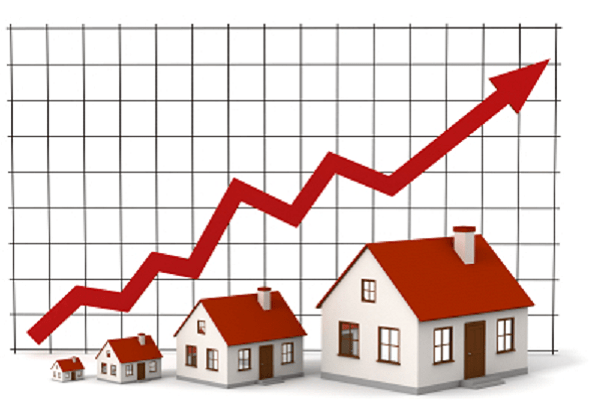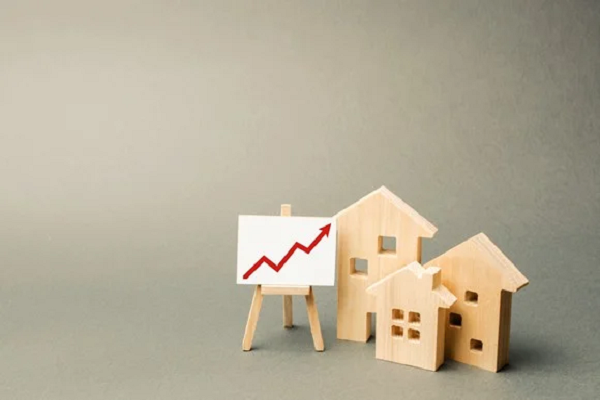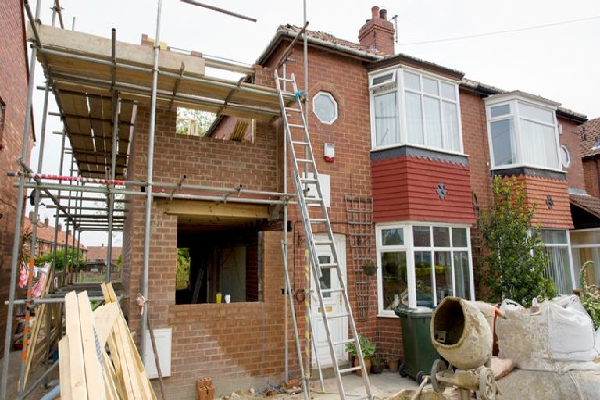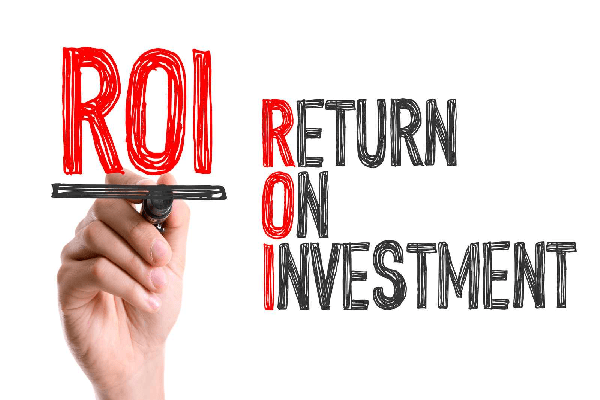Buyers Hopeful as Supply of Homes Available for Sale Increases
According to figures revealed by Zoopla, the number of homes for sale in March has seen an increase, giving fresh hope to the many UK residents trying to buy property.
Data shows that the average house price has risen by 8.1% in the year to February, prompting some homeowners to put their homes on the market, resulting in an increase of 3.5% of available housing stock in March.
Although it is not a huge rise and looking at past figures reveals that stock levels are down 42% on a five-year average, it is still encouraging to see any rise in the supply of available homes for sale.
For homeowners selling their properties, although the house price rises are beginning to slow down, with the demand so high, they will have no problem finding buyers. The report shows an unseasonal increase, twice the usual rate, of requests for family homes. Buyer demand is 65% higher than the five-year average, meaning more homes for sale are still needed on the market.
Sarah Coles, senior personal finance analyst at Hargreaves Lansdown, said: “It has been a sellers’ market for so long that people expect their home to be snapped up by a ravenous pack of property-starved buyers the second their property particulars are published.”
“But there are signs of a subtle shift that could eventually make it much more difficult to shift your home.”
“The Zoopla figures show that sellers are flocking to the market, with some keen to lock in property price rises while they still can.”
“Meanwhile, although demand remains higher than usual for the time of year, it has fallen since the start of 2022. So, the balance of supply and demand is changing.”
One demographic that will be pleased with the upturn in housing stock will be first-time buyers.
“Another month of rising house prices is great news for current homeowners, and the rise in the number of listings across the country will be music to the ears of first-time buyers and those making their next steps on the ladder alike,” he said.
“Many first-time buyers will be familiar with bidding wars pushing offers well above asking price due to the limited number of properties coming onto the market; with more listings, first-time buyers could see their chances of finding their first home at market price improve.”
But, he said, the increasing prices still presented challenges for new buyers. “Our recent research showed that first-time buyers in cities such as Bath, Oxford, and London would need to borrow more than seven times their salary to buy a typical house in each location,” he said.
“This highlights the challenge for those looking to get on the property ladder in some of the most in-demand urban centres.”
“While some locations are much more affordable for first-time buyers, with those in Hull, Bradford, and Gateshead needing to borrow less than three times the average salary, the wider cost of living crisis could make saving for a deposit more difficult.”
Average House Price Reported to Have Risen by £2,000 per Month Over Twelve Months
The Office of National Statistics has released figures this week showing that house prices in the UK slowed in the year up to January 2022, but also revealed that the average price of a house showed an increase of around £2,000 per month over twelve months.
In the year to January, prices rose by 9.6%, slightly down from the 10% seen up to December. Even though the pace has somewhat slowed, the dream of owning a home is becoming more and more out of reach for many people in the UK.
Potential buyers are facing the necessity of using a huge part of their pre-tax average wage to cover the additional increase in costs over the last year.
Director of research at Savills, Lawrence Bowles, commented: ‘By way of context, median annual earnings were £31,285 in 2021. This means that the increase in value of the average home was 77 per cent of total average gross earnings.’
The biggest increase in prices was seen in Wales, with a rise of 13.9%, bringing the average house price to £206,000.
Scotland saw a hike of 10.8%, followed by England at 9.4% and Northern Ireland at 7.9%. London showed the lowest increase in average home prices, at 2.2%.
The second half of 2020 and 2021 saw the UK experience a marked increase in prices, according to the ONS. This was largely due to the lack of supply of homes for sale, prompting buyers to pay more for the properties they wanted. Alongside this was the change in thought process when it came to choosing the type of property they wanted due to the pandemic and the drastic change in both home and working life.
Rapidly increasing house prices are pushing buyers to seriously stretch their finances in order to afford to buy, and with increasing interest rates, the battle is only getting harder. With the supply and demand for properties seriously imbalanced, competition is rife, and prices continue to increase, with many first-time buyers unable to get their foot on the property ladder.
The managing director at Belper-based Peak Mortgages and Protection, Rhys Schofield, warned: ‘House prices may have edged down slightly, but they’re still frighteningly high’.
‘The property market is broken, kaput’.
‘There are more buyers than houses, and any increases in interest rates are merely tinkering around the edges, as it doesn’t solve the issue around the lack of supply’.
‘The alternative to buying is renting, but when rents are going up even faster, the lack of property becomes a real issue. It’s all very well that house prices are going up, but those fortunate enough to be on the property ladder are leaving a heck of a lot of people behind.’
In England, the East Midlands saw the highest rise in prices, with a growth of 11.6% in the year to January, up from 10.4% in December.
London saw the lowest increase; however, the average home price still remains high at £510,000 in January, according to the figures from the ONS.
The North East remains the region with the lowest average home price at £151,000.
HMRC’s monthly property transaction data shows that the provisional seasonally adjusted estimate of UK residential transactions in January 2022 was 10.6% lower (106,990) than at the same time in 2021.
Seasonally adjusted monthly figures revealed an average property price increase of 0.7% from December 2021 to January 2022. The previous month saw a rise of 0.6%.
Jeremy Leaf, a north London estate agent and a former RICS residential chairman said: ‘Another day, another survey showed the resilience of the housing market despite concerns about the implications of the war in Ukraine, particularly on inflation and interest rates.
‘On the ground, existing homeowners whose purchasing power has been buoyed by savings and equity still remain keen to find homes that fit their post-Covid lifestyle.
‘Affordability is more of a factor for those buying for the first time, so it will have some impact on prices.’
It is uncertain whether prices will continue to increase as the inflation rate spirals, mortgage interest rates rise, and buyers find it more difficult to afford the increased costs.
The managing director of real estate at Shawbrook, Emma Cox, commented: ‘House prices continue to challenge any sense of normality despite rising inflation and the soaring cost of living, forcing a reality check on buyers’ budgets. Record prices and undiminished demand are putting pressure on buyers who aren’t seeing their money go as far across the board.
‘Yet, the outlook does remain positive for those looking to sell. The market remains firmly in favour of those with capital available and looking to add to portfolios or let out properties.
‘Although recent hikes in energy bills and running costs will have to be factored in, socially responsible landlords will be aware of the changes they can make to their portfolios in order to limit the impact of energy price rises in the future for tenants.’ Other data released by the Office of National Statistics showed a massive increase in the cost of living last month, with prices rising by 6.2% from February 2021 to February this year, the highest seen for thirty years. The expectation is that this figure will continue to rise over the coming year.
House Price Hike of 5.5% Predicted Despite Spiralling Inflation Rate
With the continuing imbalance in demand and supply of homes available for sale, the competition among buyers to secure a property is pushing up average home prices across the UK.
According to the House Price Forecast February report, released by Really Moving, we can expect to see an increase of 5.5% in the price of the average home over the coming three months.
In numerical terms, this will push the average house price to a record-breaking £352,984, should the predictions prove to be accurate.
Although a fall of 0.9% has been recorded so far for March and a fall of 0.2% is expected in April, May is predicted to surge by 6.7%, thereby undoing the downturn in the previous months.
These figures represent an annual increase of 11.9% when compared with May 2021. Although it is worth taking into account that data from May 2021 showed a below-average price when compared with previous years,
Despite the cost of living rising exponentially, the price of the average property continues on an upward trajectory. This is chiefly due to the fact that the demand for homes is far greater than the available properties for sale.
Despite the price drops recorded for March and April, primarily due to the slowdown in sales at the beginning of this year, the appetite among buyers is showing no signs of abating, even with the impact of rising inflation on monthly bills.
The report captures the agreed purchase price for properties when a search is performed for conveyancing services, typically around twelve weeks before completion. This data enables Really moving to forecast property sales three months ahead of time.
A number of recent base rate rises by the Bank of England have had little effect on the housing market, despite the increased interest rates resulting in higher monthly mortgage payments for homeowners. The recent base rate hike, from 0.5% to 0.75% this month, means many buyers are keen to buy now in an attempt to secure a good mortgage deal before they are no longer available.
The Russian invasion of Ukraine, coupled with escalating energy prices and the rising CPI inflation rate, is having a detrimental impact on affordability for many UK citizens. Despite this, the growing lack of stock of housing is creating a strong selling environment with buyers in fierce competition to secure a property.
How will this effect first-time buyers?
Typically, first-time buyers are of the younger generation, who have been hit hard by the rising cost of living, fuel prices, and energy bills. Generally, the younger demographic has lower-paid employment and fewer savings than the older generation, making it particularly difficult to raise a sufficient deposit in order to qualify for a mortgage. With rental charges at an all-time high, many first-time buyers are finding it challenging to save and to get their foot on the property ladder. For those fortunate enough to have a deposit, it is becoming vital that they act now in an attempt to lock in a mortgage deal with a decent fixed interest rate before interest further escalates.
How will this effect movers?
People looking to move to a new property may find themselves in a better position than first-time buyers, provided that they have sufficient equity in their current property to cover any deposit needed. Obviously, the larger the equity, the better, in terms of accessing better deals with more competitive interest rates. Although we have yet to see a decline in home movers, with the uncertainty of the war in Ukraine and the spiralling cost of living, we can expect to see these figures significantly reduce in the near future.
CEO of Really moving, Rob Houghton, commented: “Last month we saw some early signs that the market may be beginning to slow, but the latest data shows prices rising sharply in May based on activity in February, suggesting that for now, the housing market will continue to defy expectations. We’re seeing a clash of post-pandemic-driven buyer demand and a cost-of-living crisis, which is only now really beginning to bite, yet it remains a seller’s market and the supply-demand imbalance is continuing to push up prices. It’s too early to assess the impact on consumer sentiment from the war in Ukraine, and if uncertainty grows and price rises become more painful, I expect we’ll see the tables begin to turn.”
“First Time Buyers are stuck between a rock and a hard place, watching prices go up along with mortgage rates while facing the challenge of trying to save while paying record-high rents—and a shortage of homes to buy. Many will be tempted to hold out for price falls, but our advice would always be to move when you have all your ducks in a row in terms of raising a deposit, securing a mortgage, and finding the right home to buy at a price you can afford. Buying with a long-term view—at least 3 to 5 years—will help you to ride out any short-term fluctuations, rather than trying to call the market.”
Experts Agree Britain Should Expect a Home Building Boom in 2022
With the effects of the pandemic all but over, the property development sector is seeing rapid growth as the property market gains strength. Experts are expressing that we can expect to see a boom in new home developments with investors optimising current market opportunities available to them.
Last year was a difficult year for all UK residents, with no one spared the devastating effects of the COVID pandemic. Lives were both personally and professionally impacted by lockdowns and strict COVID regulations, with many finding it hard to recover.
The housing development industry was no different, and following the first lockdown back in March 2020, returning to work was challenging due to constantly changing protocols and laws relating to the pandemic. Shortages of workers on a mass scale and drastic increases in the prices of building materials, which had already been an ongoing issue due to Brexit, contributed to the housing development problem.
The result was that the housebuilding industry saw a distinct decline during 2020, which was no surprise to anyone.
Despite all the obvious obstacles, the housing development sector still achieved a respectable £37.8 billion in construction output throughout 2020; however, this is the lowest figure seen since 2016. This signified an annual decline in value for the first time since 2012 and a significant decrease of 21% in comparison to 2019.
When comparing these figures with previously recorded data, we can see that this annual dip is the only one recorded since 2010, which indicated a drop of 5% in 2012. Following this decline, the building industry succeeded in achieving an average annual growth rate of 11% from 2010 to 2019, and despite the pandemic, it even managed an average annual growth rate of 8% by the end of the decade.
The more recent drop in annual growth was felt across the board; however, it was more pronounced in the public sector, with values dropping a whopping 32% as opposed to the private sector, where an average drop of 19% was reported.
So, what do these figures mean when it comes to the property development market? Based on the values provided and how many new-build homes were completed, the average price per home was calculated at £221,594. This figure is 32% less than the previous year and the lowest figure seen since 2017.
So, what can we expect for the future of the property development sector?
2020 saw some improvement in terms of growth in the industry, which is a positive sign for the future. The year saw 47,763 existing building firms, which continued to grow at an average rate of 6% over the last ten years, which is the highest level for this period on record.
With more businesses in existence, there are more jobs available in the sector. In figures, this is reported to be 230,000 in 2020, which is a 3.5% increase from 2019 and the highest level recorded for the last ten years.
So, it’s clear to see that despite the hardships the building sector has experienced over the last couple of years, it is picking itself up, dusting itself off, and getting back to the business of building much-needed housing for the British population.
Great British Average House Price Tops £350K For First Time in History
According to a report from Rightmove, average house prices in Great Britain have hit a historical high of £350,000 this month.
The month has seen a 1.7% increase in prices when compared to February, with the average asking price hitting £354,564, a huge increase of £5760 in monetary terms. These figures represent the biggest increase in a month for the time of year, seen for eighteen years, and signifies an annual growth of 10.4% in UK house prices.
Except for London and Scotland, all regions showed an annual growth rate of over 10%.
Experts agree that the driving force behind this marked increase in average prices is largely due to the demand-versus-supply issues in the UK right now. It is thought that demand is double that of the supply of homes available for sale, causing a serious housing shortage and driving fierce competition and price hikes.
Sellers are finding that the chances of finding a serious buyer in as little as a week are higher than ever, with figures indicating that they are twice as likely to sell in this time frame now as they would have been back in 2019.
Rightmove’s director of property data, Tim Bannister, commented: “Many of those who are selling in this record-breaking market obviously also face the prospect of buying again in the same market and being in fierce competition against other buyers.”
“Having a buyer for your own property, subject to contract, puts those who are buying again in a powerful position compared to buyers who have yet to sell, and agents report that these ‘power buyers’ are more likely to get the property that they want and negotiate the best deal on price.”
The research, compiled by Rightmove, is the latest indicator that, in the two years since the onset of the COVID pandemic, the property market has remained strong and resilient despite the state of the economy and the end of the stamp duty holiday.
A knock-on effect of the pandemic was the increased demand for larger properties due to an escalating number of workers either forced to work from home or, following the end of the lockdowns, choosing to continue to do so. Being forced to stay home meant many people’s priorities changed when looking at what type of property they were looking to buy.
The result of this demand for larger homes was an increase of 3.4% in seller asking prices for properties with four or more bedrooms. This went a long way in encouraging homeowners to place their properties for sale on the market, with a 12% rise in the number of sellers on the market when compared with the same period last year.
Head of regional agency at Strutt & Parker, Kate Eales, stated: “The trend of a significant number of people planning to work from home for three days a week or more in the longer term has created new hotspots across the country for part-time commuters, including Shropshire, the North Cotswolds, and Suffolk.”
Annual House Price Growth Exceeds the National Average Salary
Over the course of the past 12 months, the average market value of a home in the UK increased by just under 11%. This was the fastest rate of growth recorded in 15 years, taking average UK house prices to a new record high of £278,123 in February.
Data published by Halifax, suggests that on average, UK homeowners saw an extra £27,215 added to the value of their properties between February 2021 and February 2022. According to the Office for National Statistics, the average annual salary during the same period of time was £25,971.
This suggests that UK homeowners made more from their homes during this time than from their jobs, a trend many experts predict will continue indefinitely.
“This was an eighth successive month of house price growth, as the resilience that has typified the market throughout the pandemic shows little sign of easing. Lack of supply continues to underpin rising house prices, with recent industry surveys showing a dearth of new properties being listed, now a long-term trend,” said Halifax managing director Russell Galley.
“This may be a particular issue at the larger end of the property market. In the past year, the average price of detached properties has risen at a rate more than four times that of flats in cash terms.”
“Looking ahead, as COVID moves into an endemic phase and almost all domestic restrictions are removed, geopolitical events expose the UK to new sources of uncertainty.”
A good time to own your own home
Increasingly, prospective first-time buyers are finding themselves being priced out of the UK property market in its entirety. On a more positive note, those who already own their own homes are making an unprecedented windfall.
“There’s arguably never been a better time to be a homeowner as, despite all that’s been thrown at it, the UK property market continues to go from strength to strength,” said Marc von Grundherr, director of Benham and Reeves.
“This performance really is quite alarming when you consider the wider economic turmoil that we’ve faced for some years now, and it proves that there really is no safer investment than bricks and mortar.”
“Even across London, where market conditions have remained far more muted, values have continued to climb, and the capital’s property market is now poised to enjoy an accelerated rate of growth over the coming year.”
Attention turns back to the capital
While London recorded the slowest average property price growth over the period (5.4%), this is still the region’s best performance in almost two years.
“If 2021 was defined by a race for space and people moving out to the suburbs, 2022 is seeing… house hunters rushing back into the capital,” commented Guy Gittins, chief executive of agents Chestertons.
Meanwhile, Nationwide highlighted the potential complications on the horizon attributed to the escalating conflict in Ukraine.
“The continued buoyancy of the housing market is little surprising, given the mounting pressure on household budgets from rising inflation, which reached a 30-year high of 5.5% in January, and since borrowing costs have started to move up from all-time lows in recent months,” commented Nationwide.
“The squeeze on household incomes is set to intensify, with inflation expected to rise above 7% in the coming months,”
“Indeed, there is scope for inflation to rise even further as events in Ukraine threaten to send global energy prices even higher.”
“Assuming that labour market conditions remain strong, the Bank of England is also likely to raise interest rates, which will exert a further drag on the market if this feeds through to mortgage rates.”
Which Residential Renovations Offer the Best ROI?
Whether you are planning to put your home up for sale or you are simply looking to improve it for your benefit, getting the best return on your investment is always a priority.
But which residential renovations add the most value to a home, over and above the costs of the project? If you are looking to maximise your home’s market value, which renovations should you be setting your sights on?
A word on property type and location
Before getting started, it is worth noting how the ROI on any given renovation may be different from one part of the country to the next. For example, data from the Federation of Master Builders (FMB) indicates that while adding an en-suite bathroom to a bedroom in London could add around £15,000 to the property’s value, the same project in the northeast of England would contribute £2,000.
Before performing any major refurbishments, consult with a reputable local construction firm for their advice and recommendations.
Loft and garage conversions
One of the most popular (and profitable) ways to add value to a home is to convert a garage or loft into a fully functional living space. Research suggests that while a quality loft conversion can add as much as 15% to a property’s value, a garage conversion can contribute as much as 20%.
While both projects are fairly extensive in nature, they can also be surprisingly affordable. A simple loft conversion can be conducted for around £10,000 and up, whereas a garage can be converted for as little as £5,000.
Energy efficiency improvements
Homebuyers are placing greater emphasis on energy efficiency than ever before. As a result, energy-efficient home improvements can add significant value and appeal to any type of property. Smaller projects like adding cavity wall insulation and higher-quality loft insulation can be covered with no more than around £1,000. Fitting an energy-efficient boiler coupled with a smart thermostat could add a price closer to £3,000, while the installation of high-efficiency double glazing could cost £5,000 or more.
Either way, research from the UK government suggests that energy-efficient home improvements can contribute anything from 15% to 35% extra to a home’s value. Irrespective of the costs of the renovations, the ROI could be huge.
External improvements and landscaping
First impressions are everything when looking to get the best possible price for a property. Oftentimes, prospective buyers have made their decision long before setting foot through the door. An attractive exterior is so important that some studies suggest a well-kept garden can add up to 20% to the value of a residential property.
Landscaped gardens with private recreation spaces and plenty of decorative plants can be particularly profitable when selling a home. The installation of good garden lighting can also make a major difference, particularly when presenting your home to prospective buyers at night. Importantly, a garden that looks relatively straightforward to keep well-maintained is essential. A garden that will be a full-time job to tend to is never particularly attractive.
Kitchen and bathroom upgrades
Kitchens and bathrooms tend to be scrutinised particularly heavily by prospective homebuyers. A complete kitchen renovation can generate a generous ROI, but so too can replacing things like worktops, cabinet doors, and appliances. If it is an option, creating an open-plan living and dining space by removing an internal wall is worth considering. Some estimates suggest that while the project may cost around £5,000, it has the potential to add up to £50,000 to a home’s market value. Installing an en-suite bathroom also guarantees a decent ROI, typically up to a maximum of a 5% property value increase.
85,000 Rental Properties Needed Yearly in London to Hit Government Target
A new report has identified that around 85,000 new rental homes are needed every year in the capital in order to reach government housing targets.
The report, which was commissioned by the NRLA (National Residential Landlords Association) and created by Capital Economics, an economics consultancy firm, identifies the serious shortage of properties available in the London rental market.
This supply deficit is based on the government’s set target of the number of homes that need to be built to meet the rental demand in London. Currently, in order to reach levels of demand, that target is set at 340,000 homes per year to be built across the UK by 2025.
The Capital Economics report shows that if social rental properties and residences occupied by the owner continue to grow at an average rate over the next decade, then the private rental market will require an additional 227,000 properties annually to reach government targets.
This increase in property supply is also vital to meet the levels of the expected number of new households across the UK, which are currently predicted to be around 1.8 million. The capital alone would need an extra 83,000 new properties available for rent over the coming 10 years.
Government data shows that the supply of available private rental accommodation in London has fallen by 85,000 over the last five years. This shortage in supply is particularly challenging for the younger generation, either leaving home for the first time or needing accommodation for educational purposes. With this figure expected to increase by 12% (120,000) in the years up to 2030, finding accommodation for the 15–24-year-old age group may be problematic.
Research consultancy BVA BDRC provided additional data that suggests that in central London, in the last quarter of 2021, almost three-quarters of landlords saw a marked increase in the demand for rental homes. This figure indicates an increase of 54% from the previous report for Q3 2021.
The report from Capital Economics suggests that in order to meet the supply targets, the Treasury needs to find ways to encourage investment in the rental housing sector and sets out a number of ways in which they can do this.
The report advises an increase in the number of new home builds and encourages investors and developers to make use of unused commercial property by converting it into residential homes. It also pointed out that it would be beneficial for short-term leases to be turned into long-term lets, as well as ensuring that empty properties are upgraded to a standard where they are habitable and can be put back onto the rental market.
The chief executive of the NRLA, Ben Beadle, explains: “As the demand for private rental properties picks up following the pandemic, renters across the capital will struggle to find the homes they need and want. For all the efforts to support homeownership, the private rented sector has a vital role to play in housing so many Londoners.”
“The analysis demonstrates the folly of the mayor’s calls for rent controls in the capital, a policy that would serve only to freeze investment in the very homes renters need.




 0116 402 7982
0116 402 7982






